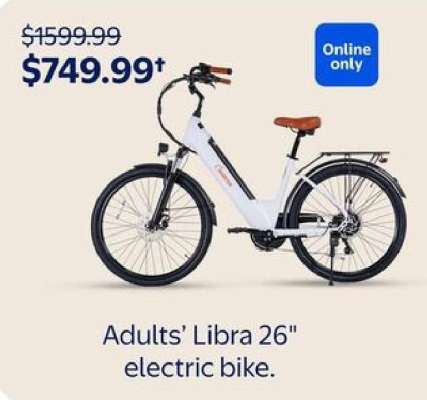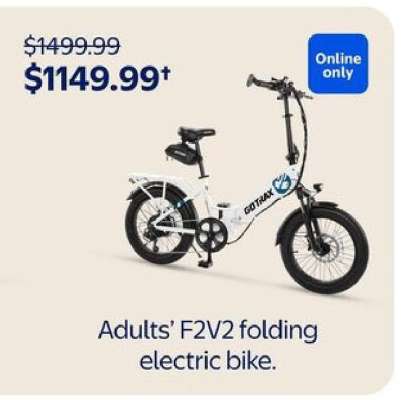Electric bike - Current prices from Walmart flyers
Price
Price overview
|
Retailer
|
Description |
Validity
|
Price
|
|---|---|---|---|
|
Walmart
|
Adults’ Libra 26" electric bike
|
|
|
|
Walmart
|
Adults’ F2V2 folding electric bike
|
|
|
|
|
|
|
|
|
|
|
|
|
|
|
|
|
|
|
|
|
|
|
|
|
|
|
|
|
|
|
|
|
|
|
|
|
|
|
|
|
|
|
|
|
|
|
|
|
|
|
|
|
* The price can vary in different stores
** The price may be VAT exclusive
You will find electric bike at the discount price of $749.99 in Walmart. This special offer is valid from August 07, to September 17, 2025. If you would like to buy electric bike, visit your nearest Walmart.
Electric bike - the lowest price - Walmart
Appearance in flyers - Walmart
Latest flyers









